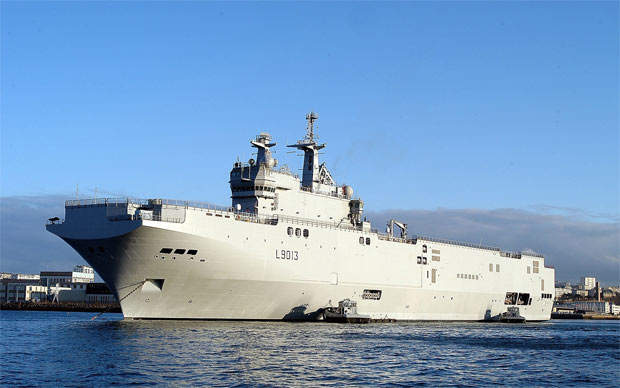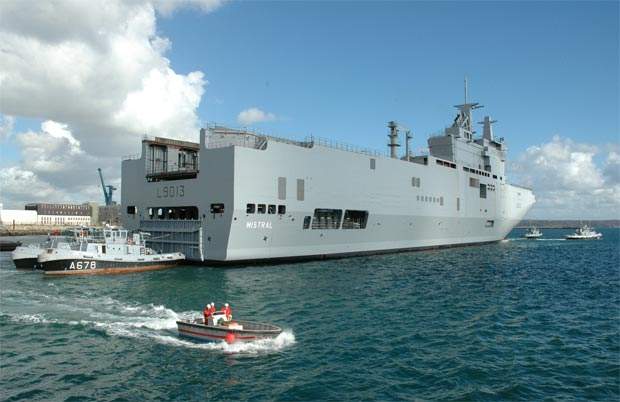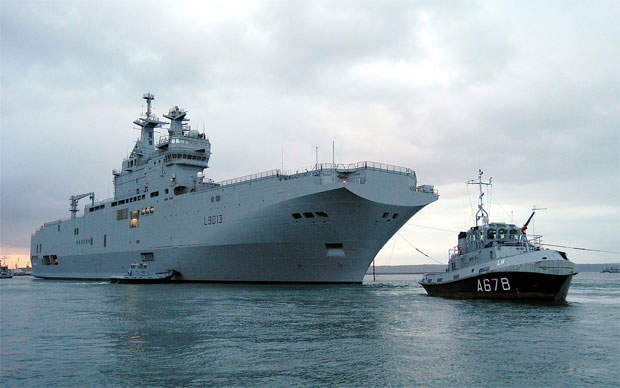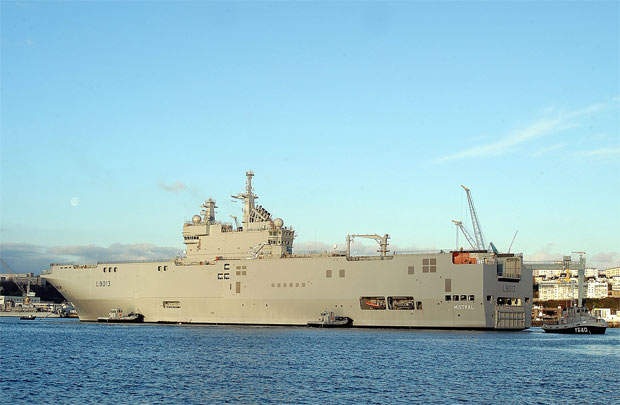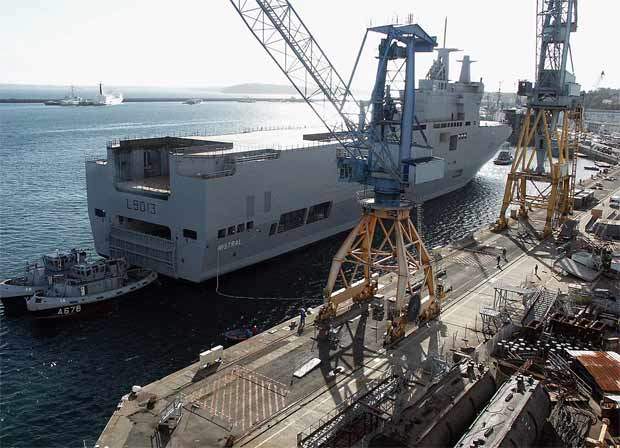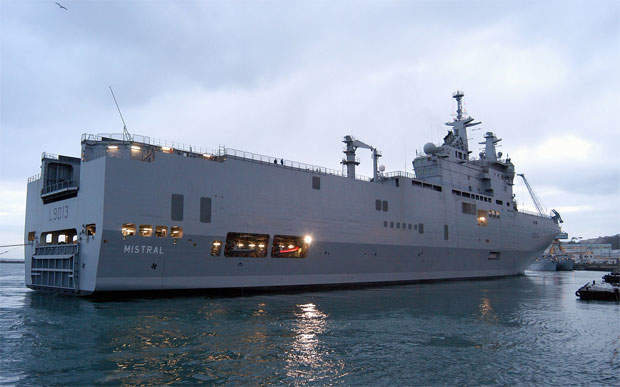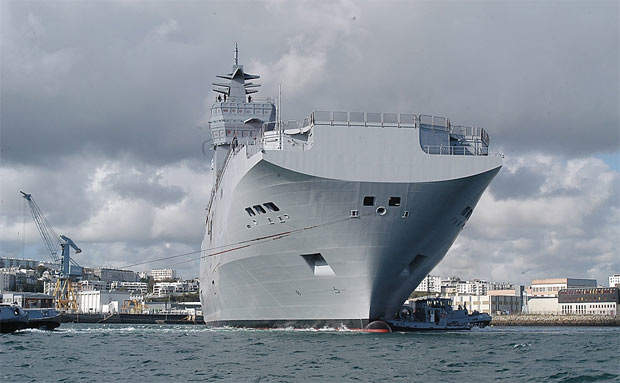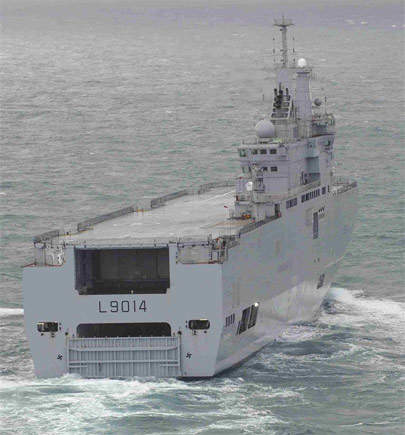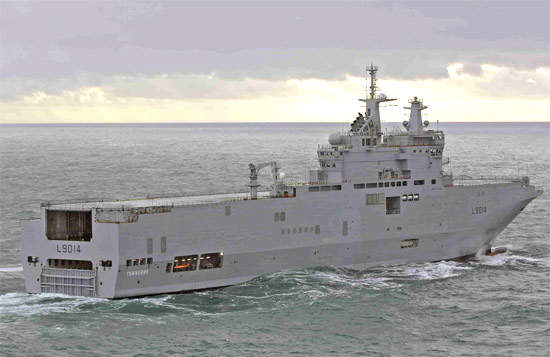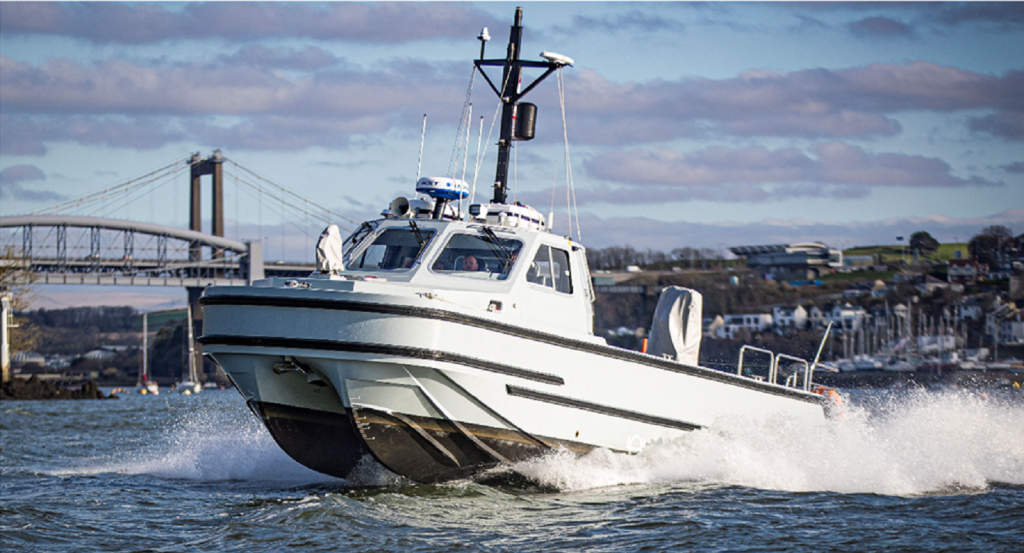The Mistral and Tonnerre BPC (bâtiment de projection et de commandment) ships are the French Navy’s new 21,300t amphibious assault, command and power projection ships.
The ships have been built by DCN in partnership with Thales and Chantiers de l’Atlantique.
Each ship has the payload capacity and versatility to carry up to 16 heavy helicopters and one-third of a mechanised regiment, plus two LCAC hovercraft or up to four landing craft.
In April 2007, DCN became DCNS. This followed an agreement in which Thales became a 25% shareholder in the new company, and DCN acquired the naval business of Thales France (excluding naval equipment).
The Mistral Class is fitted with a high-performance communications suite, which makes the ship suitable for deployment as a command vessel. The ships also have the capacity to accommodate a combined (multinational) joint (multiservice) task force (CJTF).
Orders and deliveries of Mistral Class
The contract for the two vessels was placed in January 2001. The keel for the FS Mistral (L9013) was laid in July 2003 and it was launched from the Brest dockyard in October 2004. Mistral was commissioned into the French Navy in February 2006. Tonnerre (L 9014) was laid down in August 2003 and launched in July 2005. It was commissioned in February 2007.
The French Navy placed the order for the third vessel, Dixmude, in April 2009. The keel for the ship was laid in January 2010. It was launched in late-2010 for commissioning in December 2012.
In June 2011, the Russian defence export agency, Rosoboronexport, signed a contract with DCNS for two Mistral / BPC vessels and associated services. The deal is a part of an intergovernmental agreement between France and Russia for four Mistral vessels.
The agreement was cancelled in 2015. Originally intended for the Russian Navy, the two vessels were delivered to the Egyptian Navy in 2016.
In July 2006, Mistral was deployed off the coast of Lebanon in support of the French Navy Operation Baliste, evacuating French nationals during the conflict involving Israel and Lebanon.
The Mistral and Tonnerre replaced the L9021 Ouragan and L9022 Orage, which were built at Brest Naval Dockyard and entered service in 1965 and 1968.
Construction of the French amphibious assault, command and power projection ships
The hulls were built in three main sections. DCN constructed the hull centre and aft sections at St Nazaire, Brest. Alstom Marine-Chantiers de l’Atlantique in Saint Nazaire constructed the forward section of the hull, which was transferred to the DCN shipyard at Brest for assembly.
DCN subcontracted Stocznia Remontowa in Gdansk to carry out construction and fitting for the centre and aft sections.
In June 2011, Russia signed an agreement to procure two Mistral-class helicopter carriers from France. The deal was worth $1.52bn. The ships were built by DCNS and STX along with the Russian United Shipbuilding Corporation, OSK.
Command and control
The Mistral Class is fitted with the DCN Senit 8 derivative combat data system as well as the French Navy’s SIC 21 command system for joint operations, which is developed by Thales.
A high-performance communications suite includes the Thales Syracuse III satellite communications system.
Aircraft landing capabilities and hangars
The ship has the capacity to carry up to 16 medium or heavy helicopters below deck, for example the NH90, SA 330 Puma, AS 532 U2 Cougar or AS 665 Tiger helicopters. The flight deck has six landing spots and a 1,800m² hangar. The 5,000m² flight deck can accommodate up to six helicopter movements simultaneously.
Amphibious assault capability of the Mistral Class ships
The Mistral carries either four CTM, landing craft utility (LCU) or two air-cushion landing craft (LCACs).
The French Navy ordered new high-speed landing craft, engins de débarquement amphibie rapide (EDA-R) which could be carried on the Mistral.
The ship has a crew of 160 with 20 officers. A mission voyage involving the transport of troops and equipment would typically take two to three weeks. Mistral and Tonnerre carry sufficient stores for the crew and 450 troops for 45 days between replenishments. The maximum speed is 19k and the range at 14k is 11,000nm.
The 69-bed, 750m² hospital is equipped with two operating theatres. If additional hospital or medevac space is required, the hangar can also be converted into a modular field hospital.
On-board weapons
The Mistral is armed with two MBDA France Simbad launchers for the Mistral air defence missile. Mistral has infra-red guidance and a range up to 6km.
The ship also has two Breda Mauser 30mm naval guns and four 12.7mm machine guns. The ship’s electronic support measures include the Thales ARBR 21 radar warning receiver.
The vessel’s surveillance radar is the MMR-3D NG G-band multirole radar from Thales Naval France. The MRR-3D has a lightweight phased array antenna and operates as both a surveillance radar and a self-defence system sensor, with automatic mode switching.
In surface surveillance mode, the MRR-3D NG can detect low and medium-level targets at ranges of up to 140km, and long-range 3D air surveillance mode targets up to 180km. In the self-defence mode, it can detect and track any threat within a radius of 60km.
Navigation radar is the Sperry Marine Bridgemaster, operating at I-band.
The Mistral is the French Navy’s first all-electric warship and is fitted with two Alstom 7MW electric azimuth pods. The power-generation system consists of three 16V32 and one 18V200 Wartsila diesel generators providing 20.8MW of power.

